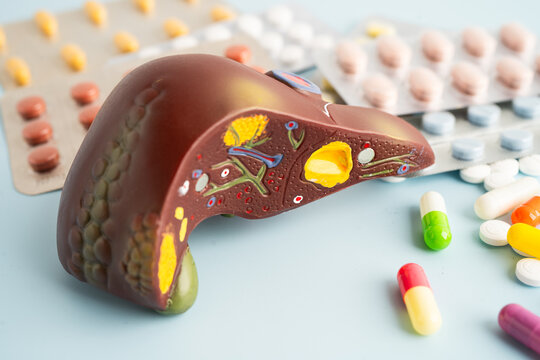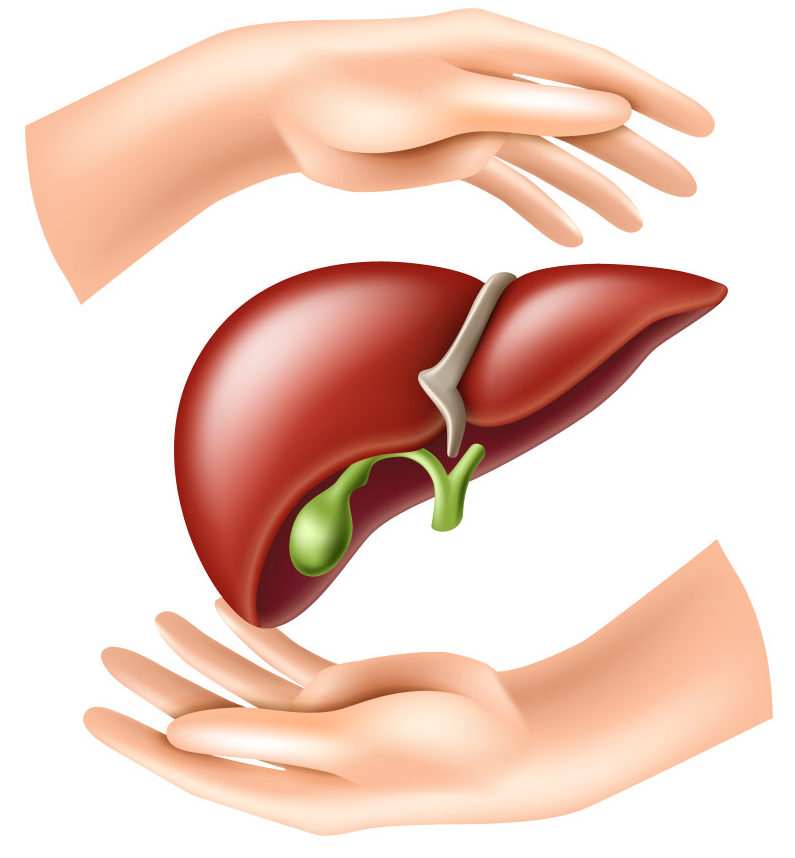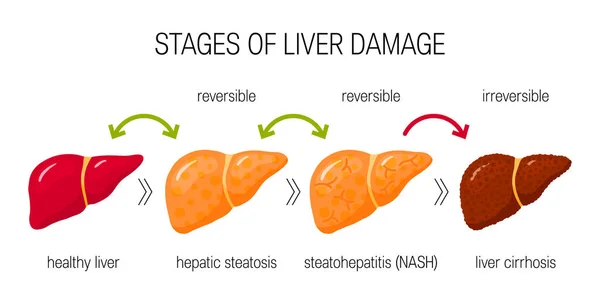Fatty liver disease (Hepatic Steatotic) is fat builds up in your liver in which excess fat builds up in the liver. It can be broadly categorized into two types:
- Non-Alcoholic Fatty Liver Disease (NAFLD)
- Alcoholic Fatty Liver Disease (AFLD)
If not treated, it can progress to more serious liver conditions like steatohepatitis, fibrosis, cirrhosis, or even liver cancer.

Liver is the largest organ inside your body. It helps your body digest food, store energy, and remove poisons, toxins from the body. It is normal for the liver to contain some fat. However, if more than 5% – 10% percent of the liver’s weight is fat, then it is called a fatty liver (steatosis).
1. Non-Alcoholic Fatty Liver Disease (NAFLD)
- Occurs in people who drink little or no alcohol.
- Often associated with obesity, type 2 diabetes, and metabolic syndrome.
- Can progress to Non-Alcoholic Steatohepatitis (NASH), which includes liver inflammation.
2. Alcoholic Fatty Liver Disease (AFLD)
- Can progress to alcoholic hepatitis, then cirrhosis.
- Caused by heavy alcohol consumption.
- Early stage of alcohol-related liver disease.
Causes & Risk Factors
Common Causes:

- Obesity
- Type 2 diabetes
- High cholesterol or triglycerides
- Insulin resistance
- Poor diet (high in sugar and saturated fat)
- Alcohol abuse (for AFLD)
Risk Factors:
- Age over 40
- Sedentary lifestyle
- Sleep apnea
- Genetic predisposition
- Polycystic ovary syndrome (PCOS)
What is nonalcoholic fatty liver disease (NAFLD)?
NAFLD is a type of fatty liver disease that is not related to heavy alcohol use. There are two kinds:
Nonalcoholic steatohepatitis (NASH), in which you have inflammation and liver cell damage, as well as fat in your liver. Inflammation and liver cell damage can cause fibrosis, or scarring, of the liver. NASH may lead to cirrhosis or liver cancer.
Simple fatty liver, in which you have fat in your liver but little or no inflammation or liver cell damage. Simple fatty liver typically does not get bad enough to cause liver damage or complications.
Now recently it is also known as Metabolic dysfunction-associated steatotic liver disease, or MASLD, is the buildup of extra fat in liver cells that is not caused by alcohol. MASLD had been previously called NAFLD.
Fatty liver often shows no symptoms in early stages. When symptoms appear, they may include:
- Fatigue
- Discomfort or pain in the upper right abdomen
- Weight loss
- Weakness
- Enlarged liver
NAFLD is becoming more common, especially in Middle Eastern and Western nations as the number of people with obesity rises. It is the most common form of liver disease in the world. NAFLD ranges in severity from hepatic steatosis, called fatty liver, to a more severe form of disease called nonalcoholic steatohepatitis (NASH).
NAFLD is categorized into two major forms:
1. Simple Steatosis (Non-Alcoholic Fatty Liver – NAFL)
- Fat accumulation in the liver without significant inflammation or damage.
- Generally benign, but can progress if risk factors persist.
2. Non-Alcoholic Steatohepatitis (NASH)

- More severe form involving:
- Fat accumulation
- Liver inflammation
- Hepatocellular injury
- Can progress to:
- Fibrosis
- Cirrhosis
- Liver failure
- Hepatocellular carcinoma (liver cancer)
Global Prevalence of NAFLD
- Global prevalence of NAFLD (as per a 2022 meta-analysis in The Lancet Gastroenterology & Hepatology):
🟢 ~25–30% of the general population worldwide
🔴 ~1 in 4 people globally has NAFLD - Prevalence of NASH (the advanced form):
🔴 Around 1.5–6.5% globally
NAFLD in India (Research Highlights)
- According to ICMR and AIIMS Delhi (2021):
- Prevalence in India: 18% to 32%
- Higher in urban populations (up to 38%) vs rural (8–17%)
- Affecting even non-obese individuals – called “Lean NAFLD“
- ICMR-INDIAB Study (2023):
- NAFLD present in over 28% of participants in a national survey
- South India had the highest prevalence
- One-third of patients had coexisting diabetes or metabolic syndrome
Can fatty liver disease be prevented?
The way to prevent metabolic associated fatty liver disease is to follow the same lifestyle advice given to people who already have the condition, including:
- eating a healthy diet that is rich in fruit and vegetables, whole grains and healthy fats
- maintaining a healthy weight
- drinking no or very little alcohol
- being physically active on most days of the week
If you haven’t been exercising regularly, speak with your doctor first.
NAFLD is considered a “multiple-hit” disease involving:
- Insulin resistance → increased fat delivery to the liver.
- Oxidative stress → reactive oxygen species damage liver cells.
- Inflammatory cytokines → promote liver cell injury.
- Gut microbiota changes → increase permeability and toxins to the liver.
Over time, these processes can lead to inflammation (NASH) and fibrosis.
Staging (fibrosis progression)

- Stage 0: No fibrosis
- Stage 1–2: Mild to moderate fibrosis
- Stage 3: Bridging fibrosis
- Stage 4: Cirrhosis
Ongoing Research Areas (2025–2026)
- Drugs in phase 3 trials:
- Obeticholic acid
- Resmetirom (THR-β agonist)
- Aramchol
- Microbiome-based therapies (probiotics, fecal microbiota transplantation)
- Artificial intelligence for liver fibrosis grading
- NAFLD screening guidelines under development for high-risk individuals (diabetics, obese, etc.)
As while understandng this concept of fatty liver the major part to control that disease is to manage healthy weight and train your body MUST READ: Functional Training
